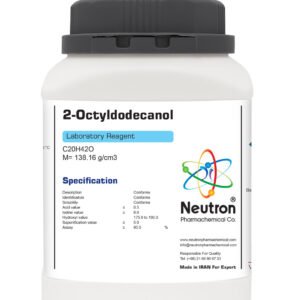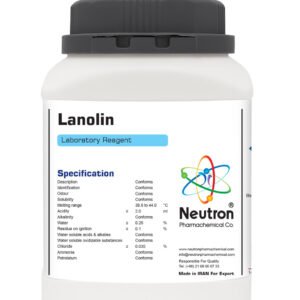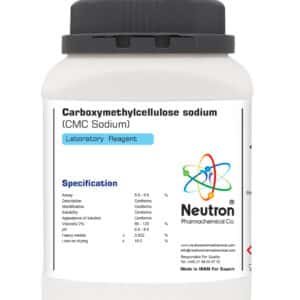اسید چرب نارگیل دی اتانول آمید
| Molecular Formula | C13H13Cl8NO4 |
| Molar Mass | 530.871 g/mol |
| CAS number | 61791-31-9 |
| HS Code | 34021900 |
| Storage | Storage at 5 to 30 ◦C |
| SDS | available |
| Appearance | Conforms | ||
| Identification | Conforms | ||
| Solubility | Conforms | ||
| pH | ~ | 10.0 | |
| Free fatty acid | ~ | 0.1 | % |
| Free amine | ~ | 3.0 | % |
| Free glycerin | ~ | 9.0 | % |
| Total amide | ~ | 85.0 | % |
Coconut Fatty Acid Diethanolamide is a non-ionic surfactant derived from coconut fatty acids and diethanolamine, widely used in pharmaceutical and laboratory formulations due to its emulsifying, foaming, and stabilizing properties.
🏭⚗️ Production
Coconut Fatty Acid Diethanolamide is synthesized by the reaction of coconut-derived fatty acids with diethanolamine under controlled conditions, followed by purification to meet pharmaceutical and laboratory-grade standards. It is typically a viscous, pale yellow to amber liquid with good solubility in water and oil systems.
🔬 Properties
Coconut Fatty Acid Diethanolamide exhibits excellent emulsifying and foam-stabilizing properties. It is chemically stable, non-toxic, and biocompatible, making it suitable for pharmaceutical and laboratory applications. The compound is amphiphilic, reducing surface tension and enhancing the uniformity and stability of emulsions.
🧪 Applications
In pharmaceutical applications, Coconut Fatty Acid Diethanolamide is used as an emulsifier and stabilizer in creams, ointments, and gels, ensuring consistent texture and uniform distribution of active ingredients. It can also act as a foaming agent in topical and liquid formulations to improve product aesthetics and application experience. In laboratory settings, it is utilized as a surfactant and dispersing agent in experimental formulations, as well as in drug delivery research to improve solubility and stability of poorly soluble compounds.
⚠️ Safety
Coconut Fatty Acid Diethanolamide is generally regarded as safe for pharmaceutical and laboratory use when applied within recommended concentrations. Prolonged or excessive exposure may cause mild skin or eye irritation, so proper safety precautions, including the use of gloves, protective eyewear, and adequate ventilation, should be followed when handling this compound.





